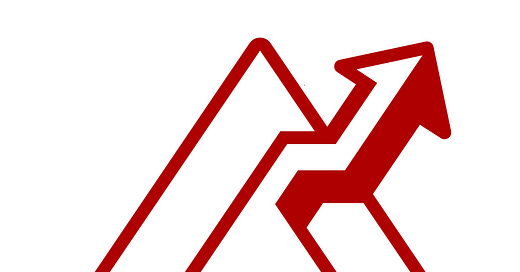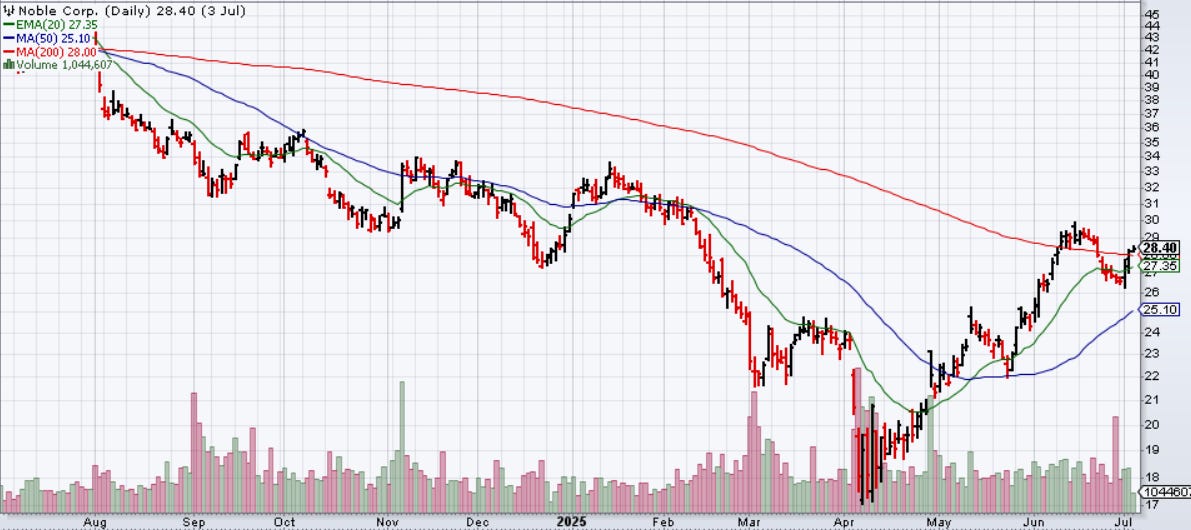AIA Newsletter July 2025
Offshore oil ready for its next act? Adding a name to the Dividend portfolio
Commentary
It’s the end of the quarter, so time for the report card.
AIA Portfolio
AIA S&P 500
2025-Q2 20.50% 10.15%
Overall 287.93% 90.46%
Dividend Portfolio
2025-Q2 2.20% 10.15%
Overall 13.90% 18.33%
*Overall timeframes
AIA Portfolio 1/2020-6/2025
AIA Dividend Portfolio 4/2024-6/2025
The AIA portfolio beat the S&P in Q2 2025. Sentiment appears to have shifted towards the type of stocks we hold in the portfolio. The uranium stocks were top performers throughout the quarter.
The goal of the AIA portfolio is to provide returns that exceed those achievable by simply investing passively in a low-cost Vanguard S&P 500 fund. We have been doing that since Q1 2020, as indicated above and have handily beatan the S&P 500.
We will not beat the S&P every quarter, but I do believe that buying cheap things with an identified potential catalyst that leads to a re-rating of an out-of-favor company/industry will lead to outperformance.
The AIA Dividend portfolio is only slightly over a year old. It is overweight energy that has not performed well recently. Nevertheless, I prefer buying shares in companies that pay dividends and repurchase stock that are currently out of favor.
I get paid to wait and have optionality to the upside once the out-of-favor sector comes back in favor. Patience is essential for investing in these portfolios.
New Portfolio Recommendation
I have been discussing the possibility that the US shale boom is peaking and that US shale oil production may have reached a geological maximum. This view is currently the minority view, as many analysts believe that recent production struggles are merely economic in nature and that if the oil price were to increase materially, drilling and production would likely increase accordingly.
Many in the industry seem to agree with my view.
A recent article by Adam Rozencwajg hits the nail on the head:
The scale of shale’s contribution is difficult to overstate. Since 2010, nine out of every ten barrels added to global liquids consumption have been met from U.S. shale fields—whether as crude or natural gas liquids. It has not merely participated in the oil market; it has defined it. For more than a decade, the world’s marginal barrel has been a shale barrel, drilled and fracked somewhere between the Permian, Bakken or Eagle Ford. That era, it seems, is drawing to a close.
History offers only two precedents for what may now be unfolding—and both came with consequences as spectacular as they were enduring. On each occasion, the engine of global production growth began to sputter, and in each case, oil prices responded not with modest recalibration but with a near tenfold surge from their lows.
The era of shale-led surges—those 1.5 million barrel-per-day annual romps—has ended. What lies ahead is less familiar, but no less consequential: a slow, likely inexorable decline.
If the contrarians are correct and we are entering a “slow, inexorable decline” in US shale production, where on earth will the new oil and gas reserves be found?
Offshore Oil is the next boom area for the oil and gas industry.
I am very bullish on offshore drilling and support companies. The sector has been out of favor for some time, as oil prices have been down and sentiment towards the industry remains negative. Yet offshore spending is increasing.
The AIA portfolio has benefited from several investments in offshore service and equipment providers. After the significant pullback in offshore spending in 2018, many companies in the sector went bankrupt, and the industry has consolidated to just a few players in each sub-sector.
This was painful when it was happening, but it worked well for us during the recovery. Fewer players mean less capacity to absorb the new work and higher revenue when the cycle turns. This has resulted in higher sales, larger backlog, increased pricing power, and excellent returns for shareholders.
When discussing offshore exploration and production, many investors focus on just the offshore drillers. Names like Transocean (RIG), Noble Corp. (NE), and Valaris (VAL) come to mind. All these charts appear to have bottomed and are now trending higher.
The stocks had been in a downtrend since this time last year, as companies began reporting rig downtime, which coincided with offshore projects experiencing delays that stretched into 2026. These delays then began to creep into late 2026-2027.
From Tommy Deepwater’s Substack:
Given project delays and related rig idle time for 2025, equity markets have been focused on the forward-looking negative earnings drag from idle time before multi-year project commencements begin in 2H26-2027. While 2025 is a year of negative operating leverage on EBITDA for most offshore drillers with idle time, transitioning idle rigs from warm stacking costs to positive cash flows while working at >$400k day is a meaningful boost to profitability.
Light at the End of the Tunnel? As currently expected, if we continue to see multi-year project commencements in mid-2026 through 2027, the drag from negative operating leverage in 2025-early 2026 should abate and turn positive for 2H26-2027, as currently projected by consensus analyst estimates.
It looks like the market, which is forward-looking (remember what Druckenmiller says about looking out 12-18 months) is beginning to price in the resumption of offshore work which has been delayed.
What delayed some of these projects? It wasn't necessarily the oil price, as offshore projects are multi-year endeavors. Shipyard delays for FPSOs (Floating Production, Storage, and Offloading) units, coupled with long lead times for subsea equipment (which we have covered through our portfolio holdings of Technip FMC and Saipem), have pushed back the need to drill wells. Why contract a rig and spend money if you can’t start production due to delays?
That appears to be changing, and the share prices are responding accordingly. This will eventually translate into the contracting of rigs and, hopefully, lead to higher day rates, as the supply of rigs is likely to remain fixed for the foreseeable future. This will result in higher cash flows and increased stock prices.
The good news is that there is a company that, due to its geographic location and unique equipment, has already fully contracted out its rigs through 2027 and is paying down debt while also paying a dividend. Management is stating that, as debt is paid down, shareholders can expect an increased emphasis on shareholder returns.













